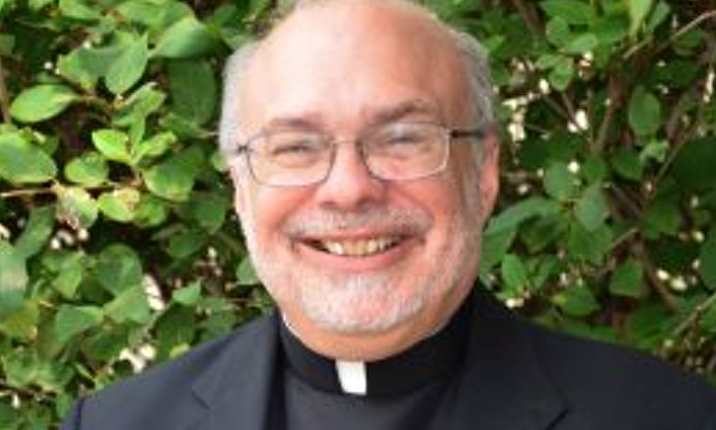|
What did WCPO I-Team find in investigation into sexual abuse in Catholic Church?
By Craig Cheatham, Paula Christian, Dan Monk
[with video] When a Hamilton County grand jury indicted the Rev. Geoff Drew on nine charges of rape in August, it was the first time in nearly a decade that a Tri-State priest had been charged with the sexual abuse of a child. Survivors say Drew’s arrest brought back memories of their own abuse from decades ago and a renewed distrust of Catholic Church leaders who had promised change and transparency. Questions re-emerged about how church leaders handle these accusations — almost exactly 16 years after a judge convicted the Archdiocese of Cincinnati of failing to report sexually abusive priests for the first time anywhere in the nation. The WCPO I-Team launched a three-month investigation to determine how the Archdiocese of Cincinnati, the Diocese of Covington and Catholic religious orders track, monitor and safeguard the public against priests and brothers who have been accused of child sexual assault. The I-Team discovered a disturbing pattern in which local Catholic Church officials failed to track priests accused of abuse, didn’t disclose to the public all of the names of priests with credible allegations, and still refuse to answer questions about why more information isn’t available. Some may accuse us of revisiting accusations from decades ago that were painful to Catholics. But our motives are simple: to ensure that the public has more complete information on priests who have been credibly accused of child sexual assault than local Catholic Church leaders had been willing to provide. Using 60 years of national Catholic directories, WCPO compiled a list of 92 priests and religious brothers who prosecutors, the Vatican or civil litigation had accused of sexual abuse. WCPO set out to create the most complete list ever published using the following criteria:
Readers can explore our data using three interactive tools. The first database allows the public to search by school and church, to see where church leaders have assigned the most accused priests. The second allows readers to see how often church leaders moved each accused priest. And a main display table allows the public to filter by diocese to review all of WCPO’s data on each of the 92 listed priests and brothers, both living and deceased. This week, the I-Team will publish four stories on WCPO.com in a series titled “Culture of Silence.” A series of four television stories will air each night at 11 p.m., beginning Monday. On Monday, the I-Team discovers that more than half of the 92 accused priests and brothers on its list who have ties to the Tri-State do not appear on any local credibly accused list published by church leaders. On Tuesday, the I-Team reveals how the Catholic Church often moves priests and brothers to new parishes and schools after they are accused of abuse or inappropriate behavior, without sharing that information with the public. On Wednesday, the I-Team finds that some Ohio lawmakers want to extend the civil and criminal statutes of limitations to make it easier for victims of sexual assault to report crimes and sue their abusers. On Thursday, the I-Team finds at least 12 former and current priests who had been accused of child sexual abuse by prosecutors, the Vatican or civil litigation who are quietly living in the Tri-State area. In an effort to include all viewpoints, WCPO made numerous efforts throughout the investigation to reach each current and former priest mentioned in television and digital stories: We visited their last known addresses, emailed them, left voicemails and even sent messages to their Facebook and LinkedIn accounts. The Diocese of Covington did not respond to eight requests for an interview or information, made by phone and email, from WCPO over several weeks. Then last week, days away from the release of this I-Team series, a spokeswoman for the diocese announced that an independent review of priest files dating back to 1950 was underway. Her statement did not provide a timetable for the review or say if a list of credibly accused priests would be released. The Archdiocese of Cincinnati declined an interview. It provided written responses to some questions about priest assignments and how it defines credible accusations of abuse. But the Archdiocese of Cincinnati declined to answer many questions, including how it monitored the priest who the church said admitted to child sexual assault but was quietly working at a local Episcopal Church. The Catholic Church isn’t required by law to supervise priests who the Vatican has removed from ministry, also known as being laicized or defrocked. But critics say church leaders should make a better effort to inform the public of past accusations. "It’s very difficult to track where these men go after they leave, especially if they’re laicized or dismissed from the priesthood,” said Thomas Doyle, a former canon attorney for the Vatican Embassy in Washington, D.C., who has reviewed more than 1,000 priest sex abuse cases as an expert witness and consultant, including cases in the Cincinnati area. “You don’t know where they are because the church washes their hands of all responsibility,” Doyle said. In the weeks to come, WCPO will continue to report on lawmakers’ efforts to change Ohio’s statute of limitations, a potential Vatican investigation into the Archdiocese of Cincinnati’s role in the Drew case, and other developments in how local Catholic Church leaders handle accusations of child sexual abuse by priests.
|
.
Any original material on these pages is copyright © BishopAccountability.org 2004. Reproduce freely with attribution.
